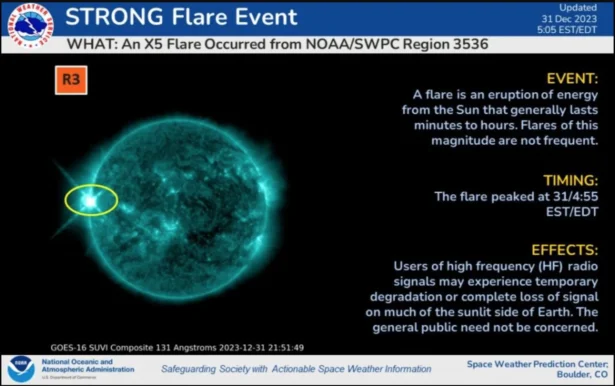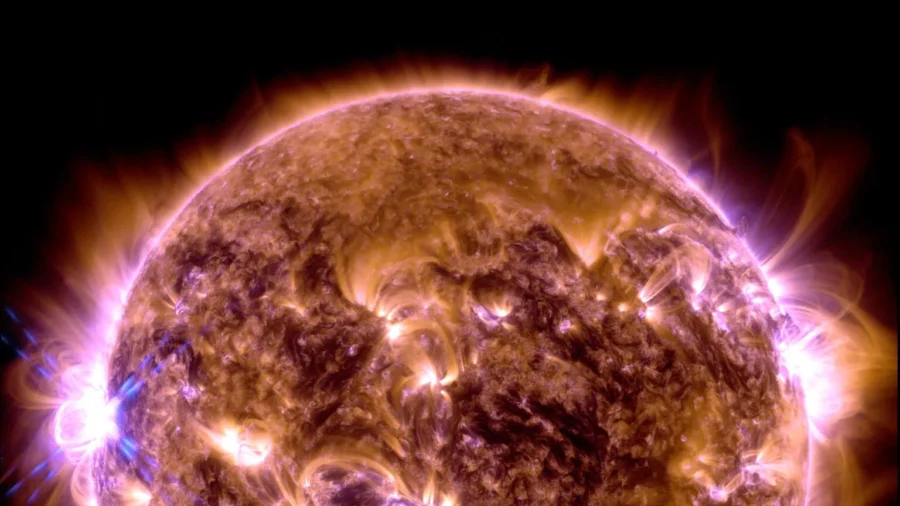The biggest sun flare since 2017 happened just before the New Year, registering at the highest magnitude and creating a geomagnetic storm that is usually followed by the Northern Lights, or aurora borealis.
The massive burst of energy on the sun’s surface occurred on Dec. 31, reaching the X5.0 level, with X being the highest level in the scale, in the same area of the star as an X2.8 flare on Dec. 14, according to NASA and the National Oceanic and Atmospheric Administration (NOOA). Both NASA and NOOA monitor Earth’s weather conditions and possible weather risks.
The flare was detected by Earth-orbiting satellites at 4:55 p.m. ET.
The sun, which is made of plasma, can emit powerful energy that reaches Earth, which can interfere with or even shut down radio signals, power grids, and geolocation signals and pose risks to astronauts.
This latest flare only impacted high-frequency radio signals, while there was no reason for concern for the general public, according to NOOA.
Tonight’s X5 #SolarFlare! Although the peak of the flare has past, the flare is very much still ongoing. We can expect to see the flare loop system continue to grow for several more hours, as the flare evolves through its decay phase. #spaceweather pic.twitter.com/T2mpIOcjpm
— Dr. Ryan French (@RyanJFrench) January 1, 2024
In September 2017, a flare of X8.2 magnitude was observed after the powerful magnetic fields in and around the sun reconnected.
Flares are classified according to their intensity, similar to the Richter scale for earthquakes, with B flares being the least intense, followed by C, M, and X.
The number afterward refers in more detail to its strength. Each letter represents a tenfold increase in energy output. Within each scale, the numbers go from 1 to 9.
According to NASA, C-class flares are too weak to noticeably affect Earth.
M-class flares can cause brief radio blackouts at the poles and minor radiation storms that might endanger astronauts.
X-class flares can create global transmission problems and worldwide blackouts.
The most powerful flare was recorded in 2003, during the last solar maximum. It was estimated to be an X45, in other words, many times stronger than the latest one.
The X5 flare was the strongest in the sun’s 25th cycle, which started in 2019 and has now entered its peak season.
NASA estimated that the sun’s peak season, or solar maximum, a period where maximum solar activity and geomagnetic eruptions are detected, is between January and October 2024.

Every 11 years, the sun’s north and south poles completely flip, and during every such cycle, its magnetic activity increases and wanes.
2023 was the year with the most observed sunspots during the 25th solar cycle, with more than half of them being observed that year. Sunspots are the areas where flares usually occur, and their creation indicates the sun’s magnetic activity.
Radiation from the latest solar flare caused a deep shortwave radio blackout over the Pacific Ocean, according to SpaceWeather.

